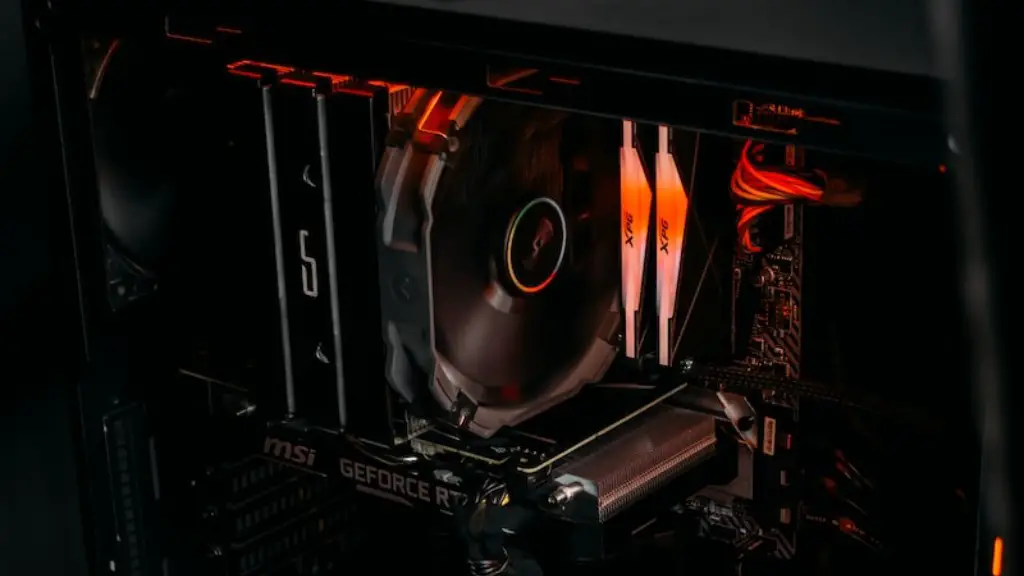When it comes to choosing a display for gaming, there is always a vital question: what is the difference between gaming monitor and TV? Despite the visual similarity between the two, they are different in a few key areas.
First and foremost, gaming monitors are designed specifically for gaming. This means that they typically come with higher refresh rates and lower latency, which can greatly improve your overall gaming experience. TVs, on the other hand, tend to feature a lower refresh rate and higher latency, as they are not specifically designed for gaming.
Another difference between gaming monitors and TVs lies in their input lag. Monitors have a much lower input lag, which can make the difference between winning and losing a game. TVs have a much higher input lag, making it difficult for gamers to play competitively.
Finally, gaming monitors tend to have more ports and connectors than TVs. This is because monitors are made to have multiple devices connected to them at the same time, while TVs typically only offer a few ports. This makes gaming monitors much more adaptable to different setups, while TVs are usually limited to a single device.
In conclusion, gaming monitors and TVs offer different experiences when it comes to gaming. While both can offer a fun and immersive gaming experience, the key difference between them lies in the refresh rate, input lag, and the number of ports.
Types Of Gaming Monitors
Gaming monitors are available in a variety of sizes, resolutions, refresh rates, and features. Some of the most common types of gaming monitors include LED monitors, TN (twisted nematic) monitors, IPS (in-plane switching) monitors, and curved monitors. ..
LED monitors are the most common type of gaming monitor and are generally the most affordable. They offer an excellent balance of image quality, response time, and cost. TN monitors are also quite popular, offering excellent response times and low input lag, but at the cost of image quality.
IPS monitors, while often more expensive, are the best choice for people who want the best image quality. They offer the widest viewing angles and vibrant colors, but have the highest response times. Curved monitors are slowly becoming more popular due to their curved design, which helps reduce glare and adds a more immersive gaming experience.
Overall, the type of gaming monitor you choose depends on your budget and the type of game you’re playing. If you’re playing fast-paced, competitive games, then you’ll want to go for a monitor with a low response time. If you’re playing more graphically-intensive games, then an IPS monitor may be the better choice.
Ergonomics Of Gaming Monitors
Ergonomics plays an important role in a comfortable gaming experience. With a gaming monitor, you should look for features that make it easier to play for extended periods. Features such as adjustable stands, flicker-free technology, and blue light filtering will help reduce eye strain.
You should also consider how your monitor is positioned. The best setup is one that lets you sit in a comfortable position and gives you easy access to all the buttons and ports. When it comes to gaming, your eyes should be level with the top of the monitor for the best viewing experience.
You can also invest in accessories such as extended mouse pads, adjustable and tiltable arms, and noise-cancelling headsets to enhance your experience. These accessories not only improve the comfort of your gaming setup, but also the experience itself.
Finally, many monitors come with gaming-specific features such as picture-in-picture and remote control. Picture-in-picture lets you monitor multiple windows at once, while remote control lets you adjust settings without having to get up from your chair.
Advantages Of Gaming Monitors
The primary advantage of gaming monitors is their responsiveness and low input lag. This makes them ideal for fast-paced games where every second counts. A gaming monitor also offers a better viewing experience due to the wider viewing angles and vibrant color.
Monitors also come with features such as picture-in-picture and remote control, which are not available on TVs. This lets you use your monitor as a multi-tasking device, and also access certain features without having to get up from your seat.
Finally, there is a wide variety of gaming monitors available, from low-cost TN monitors to high-end IPS panels. This allows you to choose a monitor that fits your budget and gaming needs.
Disadvantages Of Gaming Monitors
The main disadvantage of gaming monitors is their cost. While some models can be quite affordable, higher-end models can be quite expensive. This means that if you’re looking for a gaming monitor, it’s best to have a budget in mind before you start shopping.
Another disadvantage of gaming monitors is the lack of portability. Most models come with built-in or fixed stands, which means you’ll need extra space to move them around. This makes them less ideal for gamers who like to take their gaming setup on the go.
Also, gaming monitor displays are usually not especially bright, and can sometimes be hard to see in direct sunlight. This can make outdoor gaming or esports events more difficult, as you’ll need to find a shady spot to set up your monitor.
Finally, gaming monitors are limited in terms of resolution. While there are some monitors that support Ultra HD and 4K resolutions, these models are quite expensive and the benefit may not outweigh the cost.
Gaming Monitor vs. TV
In conclusion, the difference between a gaming monitor and a TV lies in their capabilities and features. A gaming monitor is designed specifically for gaming and offers a better viewing experience, faster response times, and more ports. However, it also tends to be more expensive. A TV, on the other hand, is typically cheaper and more portable, but offers lower refresh rates, higher latency, and fewer ports. Ultimately, the choice between a gaming monitor and a TV depends on the user’s preferences, budget, and gaming needs.

